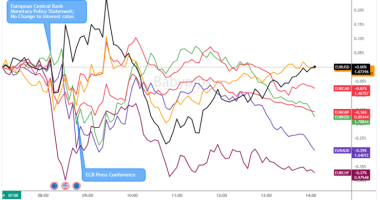
In the past when someone modelled the financials of an export-oriented company, they did pencil in a 4% depreciation of the currency. Somehow, this 4% has been embedded and it amazes that over the past period, there has been some large stress on the economy and yet the currency seems to be able to weather it quite well. INR depreciated from 31 to 62 from 1995 to 2014, a fall of 3.7% pa over this period. After that, INR has depreciated from a level of 63 to 76, a dip of 21% at the rate of 2.4% a year. Over the last 3 years, the pace of depreciation has been just around 2%.
The Covid period did see the country become current account surplus for a brief while as imports fell, people stayed indoors and this was further helped by lower oil prices. However, this cycle has now turned back completely. In spite of over USD400bn of exports in FY2022, we also recorded a very large current account deficit. Oil prices have shot up from sub USD70/bbl a few months back to over USD130/bbl while they are now back to around USD 100/bbl. A USD increase in price of oil is over a billion gone from the country on an annual basis and in the past, this did put a large pressure on the INR.
While oil has been on the boil, FPIs too have been redeeming. The selloff from FPI over the past few months has been stronger than any other time in the past and a USD500mn of net selling in a day is now a usual phenomenon. INR has broadly maintained its level in spite of strong FPI selling.
In the past we saw the currency come under large pressure when currencies of competing economies tumbled. A currency weakness in say Asian countries, our neighbouring countries influenced the level of INR as we compete in several goods. However, this time it has been different. While some currencies like Ringgit and the Chinese Yuan have seen similar moves to INR, many other like the Turkish Lira, Thai Bhat, Pakistani and Sri Lankan Rupee have depreciated much more strongly over the last year.
The INR has broadly been stable, in spite of the fact that the US Fed has embarked on taper and has increased rates once already and is slated to increase again shortly while the RBI has kept its rates unchanged as yet.
The newfound stability of the currency could be a sign of the economy getting stronger and more balanced. Our external sector is now much stronger than before and is able to take shock of sudden oil price increases much better.
This is primarily on account of buoyancy in our software exports which now exceed USD150bn and are expected to continue to grow strongly over the next two years. In the past, software exports were much smaller than oil imports and increase in oil prices did impact us negatively. In FY2013, IT exports were lower than oil imports by USD88bn. However, now at USD75/bbl oil, software exports exceed oil imports. An interesting point is that our software exports now exceed the oil exports of some of the largest oil exporting countries before the current oil spike. Over the next two years, our software exports would be more than our oil imports even if the oil prices stick at USD100.
The other significant change has been the broadening of our export basket. Agri commodities (including fishing) now make up USD50bn in exports. The cause of the current oil spike is Russia-Ukraine conflict. This conflict while it is hurting us on oil, it is also providing some opportunity to export agri produce at better prices and quantities globally. Our agri exports could see a growth of 25-50% over the next year (a one-time opportunity given the FCI stocks) and that would help address to some extent the pain of high oil prices.
It also helps that in period of high oil prices, the capex in oil producing countries goes up and increases the demand for Indian labour. The remittances have already started showing some buoyancy and are coming in at a rate of USD20bn a quarter and may cross USD80bn on a full year basis. These flows take care of our large current account deficit which could be in the range of USD75bn to USD100bn in FY23.
Indian forex reserves have been buoyant over the past 3 years and have seen an accretion of USD240bn. This again has occurred as a result of a combination of factors discussed above and again gives the RBI some room to manoeuvre. The other notable occurrence is that while the INR is relatively stable, yet our exports have been very buoyant and crossed USD418bn in FY22 pointing to the fact that our exporters have learnt to live with stable currency.
Stability of the INR has other positive effects as well. It could allow for more convergence of interest rates between our rates and that of the developed world. Currency depreciation feeds into inflation and the interest rates have to account for the same. Lower currency depreciation should hence allow for lower interest rate premium. It helps that India is now breaking into the top 5 economies globally. If one looks at government paper interest rates in top economies such as US, China, Japan, and Germany they offer only a fraction of our interest rates offering room for convergence even after accounting for some currency depreciation.
While these are positive trends, these are early days and one needs to watch this space and see how the INR behaves if the stress period expands while it is believed that there are great chances that it would continue to demonstrate relative stability.









